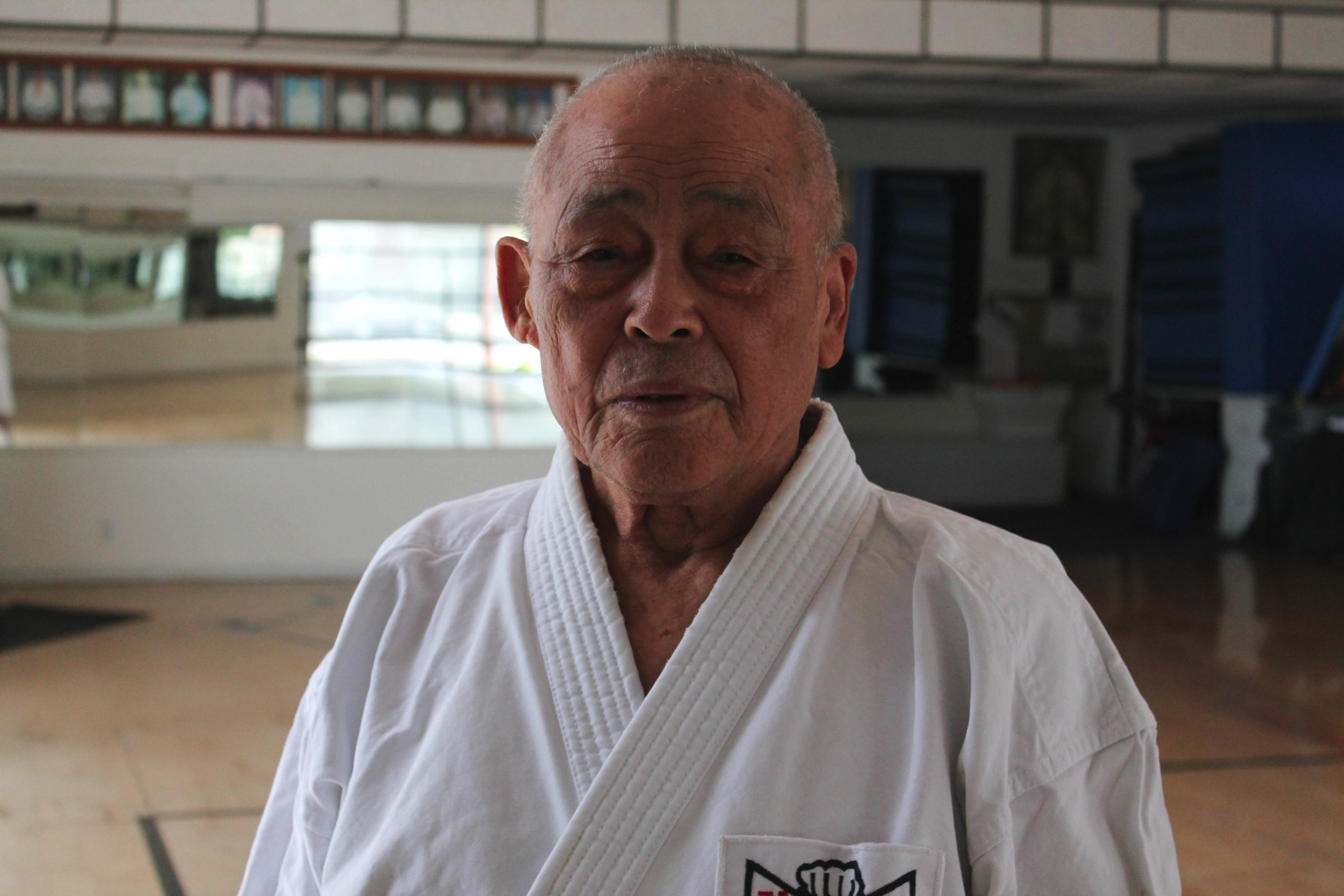Soke Takayuki Kubota is a karate grandmaster, founder of the International Karate Association and creator of the Gosoku-Ryu karate style. For the last 39 years, when he has not been busy assisting movie directors or training law enforcement, he teaches karate once a week at Occidental College. As impressive as his resume sounds, his journey to international stardom may be even more intriguing.
One of Kubota’s first exposures to karate came when he was a five-year-old boy in Yashiro-Shi, a small town in rural Japan. His school teacher at the time owned a sword that captivated Kubota and other students. Rather than immediately introducing the children to swordsmanship, the teacher responded by teaching them the basics of fighting with bamboo sticks.
Kubota jokingly looked back on his early learning, noting that it was probably a good idea to give the children bamboo so nobody lost a finger while playing with swords. Over half a century later, Kubota’s bamboo training seemed to have paid off.
As a teenager, Kubota wanted to go to Tokyo in an effort to find an opportunity for a bigger lifestyle than the small farming lifestyle that awaited him in rural Japan. His only way to afford transportation to the city was through a family friend who worked on the railways and was able to get him a ticket.
As a 15-year-old in post-WWII Tokyo, Kubota — carrying only an army blanket and a couple sacks of rice, he encountered many struggling individuals and even lived among the homeless on the streets of the city until the Tokyo Police Department identified him as an asset.
Tokyo PD recognized Kubota’s roots in karate, specifically his bamboo fighting style, and made a deal with him. He taught police officers new offense and defense in exchange for housing, clothing and food.
Kubota’s teaching fundamentally changed the way police taught hand-to-hand combat in Tokyo. Kubota began teaching at a Karate school as he gained popularity in law enforcement circles. In 1963, public recognition from Tokyo PD and work with U.S. bases in Japan attracted the attention of the U.S. Embassy in Japan, from which a representative invited Kubota to come to America and do similar work for the U.S.
Kubota was initially hesitant to leave his Dojo and life in Japan, but eventually moved out to Los Angeles in 1964, where he began training with martial artists like Bruce Lee and Chuck Norris.
Kubota recalled his first encounter with these stars at the International Karate Championships in Long Beach in 1964. Pulling up photos from the event, Kubota nonchalantly mentioned how he trained with them at a Sunset Blvd Dojo for four years until Bruce Lee left for Hollywood.
Meanwhile, Kubota worked with federal agencies like the FBI and local police departments, teaching defense techniques based in Karate. Throughout the years, Kubota received multiple documents of recognition from police departments, federal agencies and even Presidents Bill Clinton and Barack Obama, celebrating his work and thanking him for his service as an instructor.
Kubota’s work with individuals from all walks of life, however, adds to the impact that he has on Occidental’s karate club. According to Brandon Richardson (senior), Kubota’s story reached members before they even joined the club.
“I remember when I first started Karate my freshman year and was told about this legendary ‘real life Miyagi’ type man,” Richardson said. “He always checks in with those of us that compete and gives us helpful advice on how to improve. I feel lucky to have had the opportunity to learn from this man over the past 4 years.”
In the early ’70s, Kubota followed Lee’s and Norris’ footsteps and gave movie making a try as well. He has worked on movies such as “Fast and Furious: Tokyo Drift,” “Pearl Harbor” and “The Mechanic.” He also estimates that he has worked on approximately 200 commercials.
Kubota repeatedly emphasized mental strength and focus as keys to his accomplishments. Eager to illustrate his point, Kubota closed his eyes as a student walked through the door, showing his ability to point out where the student was walking, counting the steps as the student walked across the room.
That focus got him to where he is today. Hopefully, students can sense, like success amongst his Dojo walls, the heightened mental acuteness within his teaching.
Have a sports tip? Email us at weekly@oxy.edu or tweet us @OxyWeekly.
![]()



































